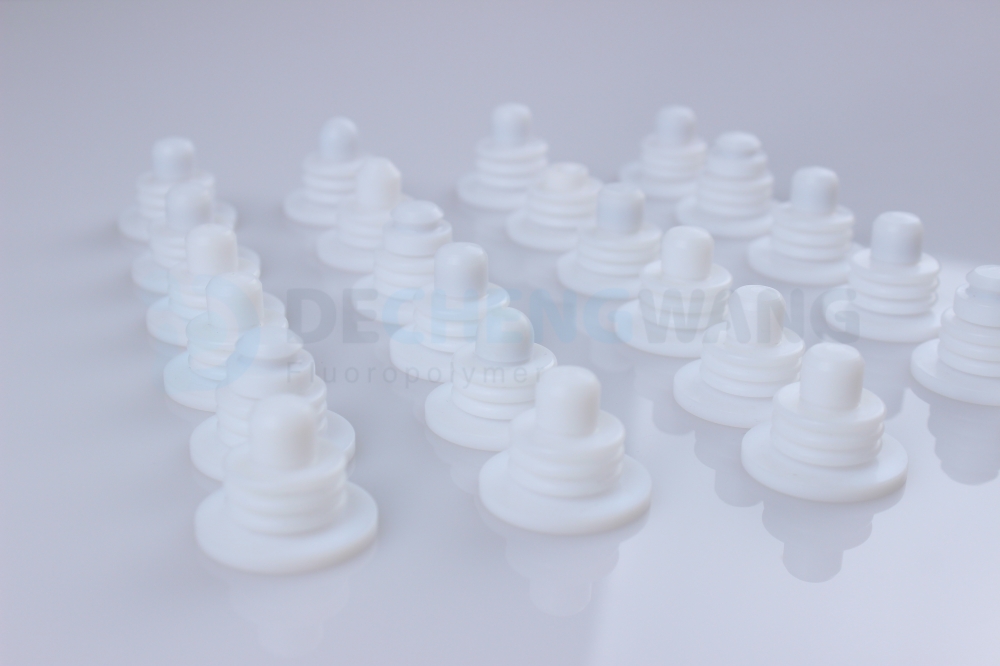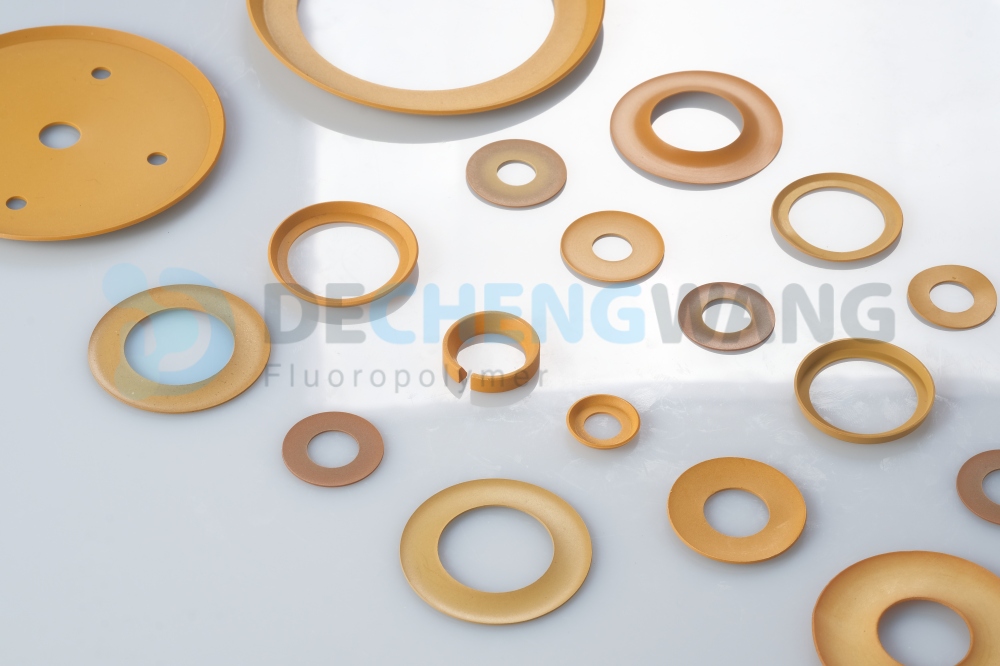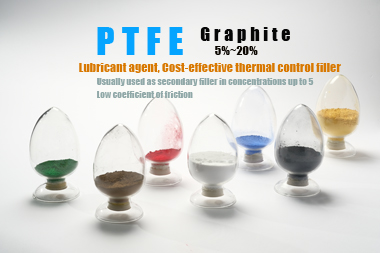
Applications: PTFE Bellows seals for valves
Bellows Mechanical Seal are a type of mechanical seal where the spring element is a bellows. They are a critical component in preventing fluid or gas
When it comes to manufacturing ball valves, bearings, and other electrical equipment components, most frequently mix up PTFE with PEEK. Despite the fact that they both belong to the same polymer family, they have distinct benefits and shortcomings.
So, should you go with PTFE or PEEK? Here is an article that will clarify any doubts or misconceptions you may have about them both and which is better for your production goals before you visit your PTFE products manufacturer.
PEEK or Polyetheretherketone is a high-performance semi-crystalline engineering thermoplastic with solid chemical resistance, minimal moisture uptake, exceptional mechanical strength over a wide temperature range, and good dimensional stability.
Due to its durability, PEEK is used to manufacture objects required in demanding applications, such as bearings, piston components, pumps, compressor plate valves, and cable insulation.
Injection molding, extrusion, and compression molding are used to process PEEK. Though PEEK is a much more expensive polymer, it gives more value by allowing manufacturers to create parts with attributes such as lightweight, strength or toughness, and the capacity to withstand hostile environments for longer.
Here are some of the properties possessed by PEEK materials:
Excellent Chemical Resistance
PEEK exhibits excellent chemical resistance, which means the polymer will not react when it comes into contact with other chemicals.
Low Moisture Absorption
PEEK is naturally hydrophobic; it does not absorb moisture.
Good Wear and Abrasion Resistance
PEEK is a robust material that can withstand high amounts of pressure and stress and protects the body from getting harmed.
High-Temperature Tenacity
PEEK can resist extremely high temperatures used in electrical components.
Exceptional Stability
PEEK is a tough and durable polymer that can endure a lot of pressure and stress while still lasting a long time.
Exceptional Radiation Resistance
PEEK is naturally radiation-resistant since gamma radiation has a low effect on it.
Environmentally Friendly
PEEK plastic is easy to recycle, and there are some applications where it is appropriate to use recycled PEEK. Natural PEEK does not include any compounds that are known to be harmful. Hence it has low toxicity.
Low Flammability
PEEK emits less smoke, fire, and poisonous gas emissions.
Hydrolysis Resistance
PEEK is resistant to steam, water, and seawater hydrolysis.
Thermal Aging Resistance
Some products are prone to damage or weaken over the course of years, but that’s not the case for PEEK since this material is quite resistant to all odds hence why it is used in manufacturing aerospace parts.
PEEK is a robust polymer known for its long-term durability and ability to survive the harshest conditions. PEEK is used in a wide range of industries, including aerospace, automotive, and many more. Here are a few examples of its uses:
Polytetrafluoroethylene, or PTFpe of plastic. Polytetrafluoroethylene is a synthetic fluoropolymer of tetrafluoroethylene with unique qualities such as excellent chemical and temperature resistance, durability, dielectric properties, and many more that make it a valuable material in a variety of applications.
It is a common element found in everyday items such as cookware pans, automobile parts, etc.
PTFE, often known as Teflon, is an industrially popular element that is used to coat non-stick fry pans, medical equipment, and automobile machinery, among other things.
Teflon is the trademarked term coined to refer to PTFE.
Thermoplastic PTFE (polytetrafluoroethylene) is a material that PTFE, on the other hand, cannot be handled using traditional polymer processing procedures because of its high viscosity. As a result, PTFE is processed through cold shaping and then heat treatment (sintering), during which polymer particles combine to produce a solid molding.
Here are some of the properties possessed by PTFE materials:
Extreme Chemical Resistance
PTFE has great chemical resistance, which means that when it comes into contact with other chemicals, it will not react.
Temperature Resistance
PTFE exhibits excellent resistance to fluctuating high and low temperatures.
Availability of Food, Medical and High-Purity Grades
PTFE is used in the coating for cookware products because it is safe to come in contact with food.
Extreme Fatigue Resistance
PTFE can withstand and resist high levels of stress while maintaining the quality of the coated material.
Low Coefficient of Friction
PTFE has a low coefficient of friction, which indicates that when used in manufacturing machinery, the products will slide down effortlessly without being caught in the middle.
Extremely Durable
The PTFE coating ensures that the product will last an extended period.
UV radiation, oxidation, discoloration, or embrittlement do not affect it.
Anti-adhesion Properties
One of the significant and most popular reasons PTFE is highly recommended and used in cookware products is its anti-adhesion properties, which prevent other items from sticking to it.
Low Water Absorption
Teflon is a hydrophobic component that repels water and is used in coating equipment and materials that need to avoid getting wet.
PTFE is employed in a variety of equipment and mechanical parts across a wide range of industries, including cookware, fabric, medical, and many others, due to its durability. Here are a few examples of PTFE parts:
Need a table to present the comparison of the differences
Parameter | PTFE | PEEK |
Tensile Strength | 25-35 Mpa | 90-100 Mpa |
Elongation | 350-400% | 30-40% |
Compressive Strength | 30-40 Mpa | 140 Mpa |
Flexural Modulus | 495 Mpa | 3900 Mpa |
Coefficient of Friction | 0.03-0.05 | 0.35-0.45 |
Temperature resistance | Up to 250°C | Up to 250°C |
Dielectric strength | 50-150 Kv/mm | 50 Kv/mm |
Chemical resistance | Virtually inert | Affected by Sulphuric acid |
Coefficient of linear thermal expansion | 14 x 10-5/K | 5 x 10-5/K |
Machine-ability | Good | Very good |
Price | Moderately expensive | Very expensive |
PTFE and PEEK are two types of polymers with similar properties but are utilized for very different applications. We hope you’ve been able to tell the difference between them. Visit Dechengwang for a clear and extensive consultation on which polymer is best for your needs.

Bellows Mechanical Seal are a type of mechanical seal where the spring element is a bellows. They are a critical component in preventing fluid or gas

In the world of engineering and manufacturing, where precision and efficiency are paramount, the role of wear resistance plastic has evolved far beyond their conventional image.

PTFE is a versatile polymer with outstanding properties like chemical resistance, low friction coefficient (self-lubricating), non-stick nature, and excellent electrical insulation. However, it also has some